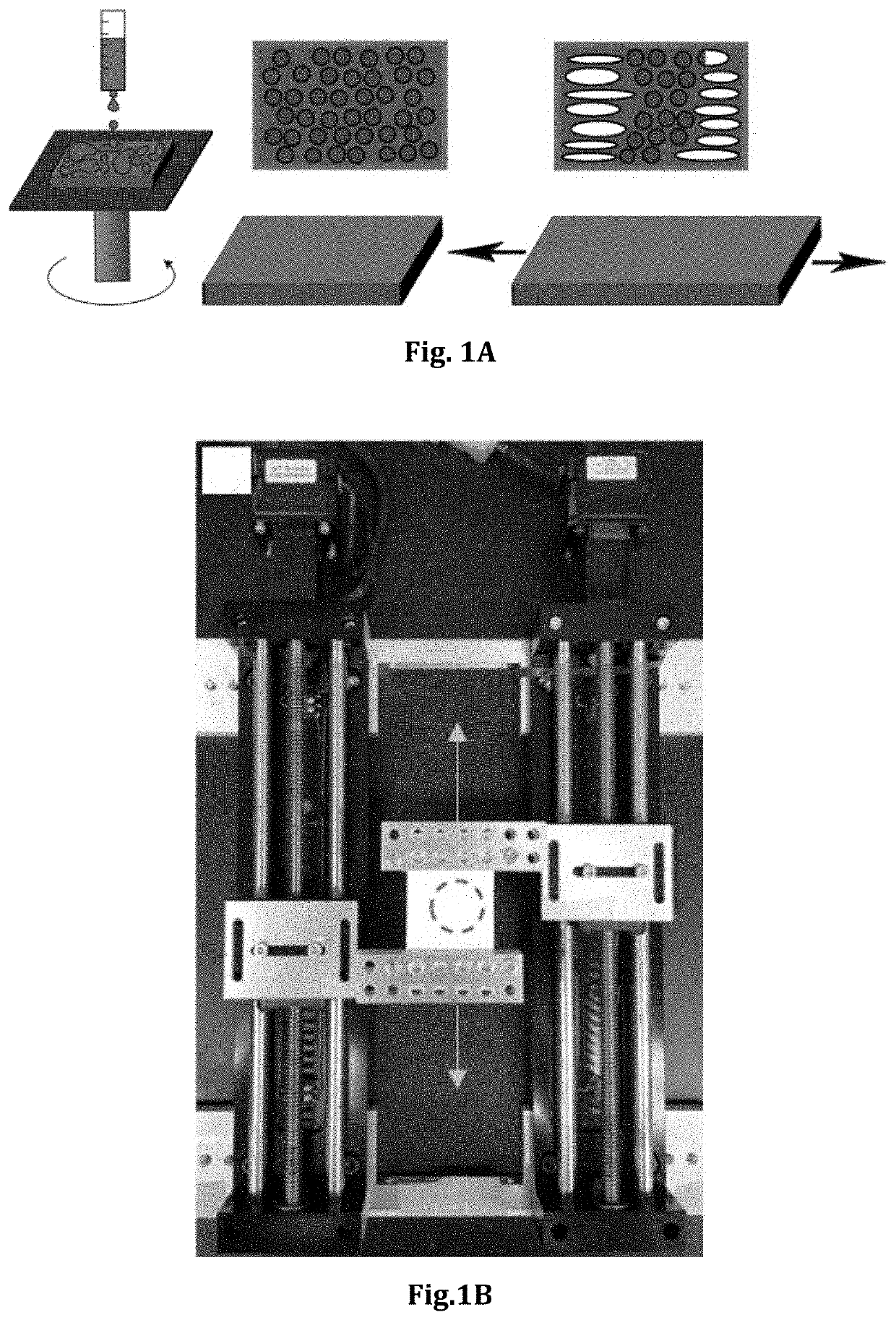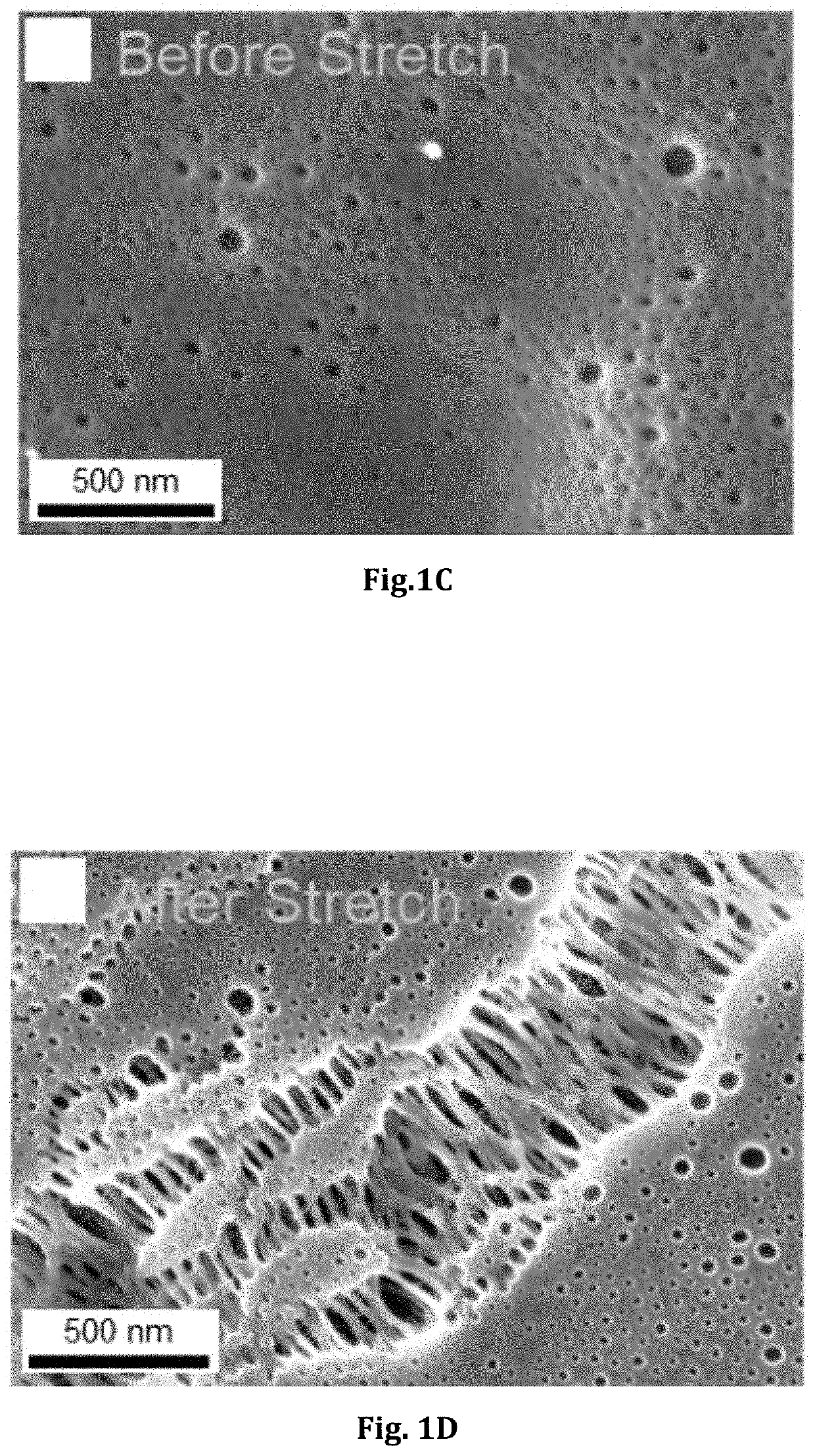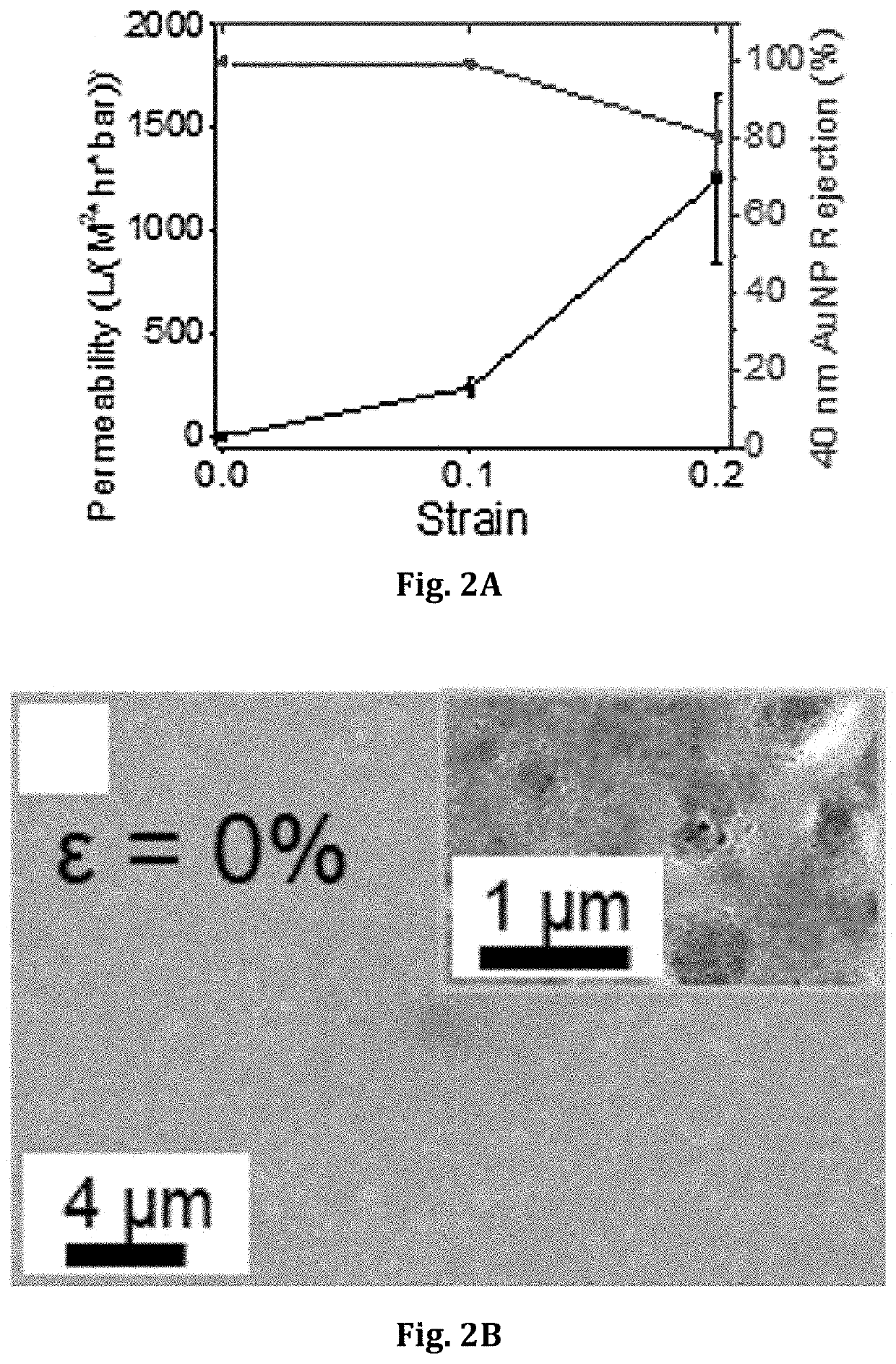Block Copolymer Templated Crazing for Membrane Separation
a membrane separation and copolymer technology, applied in the field of porous composite membrane manufacturing, can solve the problems of laborious and inability to scale up the manufacturing process, time-consuming, and low cost of bcp, and achieve the effect of reducing the cost of bcp
- Summary
- Abstract
- Description
- Claims
- Application Information
AI Technical Summary
Benefits of technology
Problems solved by technology
Method used
Image
Examples
examples
[0115]The following examples are illustrative, but not limiting, of the methods and compositions of the present disclosure.
[0116]Membrane Manufacture.
[0117]BCPs were dissolved overnight in toluene to form 1-3 wt % solutions and then passed through a 0.20 μm PTFE filter twice. BCP solution (0.5 ml) was then deposited onto water saturated PES and immediately spun cast. 40×50 mm PES rectangles were submerged in water for no less than 1 minute to ensure complete saturation. The saturated PES was then wiped with Kimwipe to remove excess water and placed on a Si wafer. Cohesion forces held the PES in place during spinning.
[0118]Spin casting was performed at 2000 rpm (1000 rpm acceleration) for 45 seconds after which the samples were dried overnight in ambient conditions before stretching. Stretching was performed using a custom built, computer controlled, linear extension stage. Membranes were clamped at either end leaving a 30 mm initial gap length. Membranes were then stretched to vario...
PUM
| Property | Measurement | Unit |
|---|---|---|
| elastic modulus | aaaaa | aaaaa |
| elongation at break | aaaaa | aaaaa |
| elastic modulus | aaaaa | aaaaa |
Abstract
Description
Claims
Application Information
 Login to View More
Login to View More - R&D
- Intellectual Property
- Life Sciences
- Materials
- Tech Scout
- Unparalleled Data Quality
- Higher Quality Content
- 60% Fewer Hallucinations
Browse by: Latest US Patents, China's latest patents, Technical Efficacy Thesaurus, Application Domain, Technology Topic, Popular Technical Reports.
© 2025 PatSnap. All rights reserved.Legal|Privacy policy|Modern Slavery Act Transparency Statement|Sitemap|About US| Contact US: help@patsnap.com



